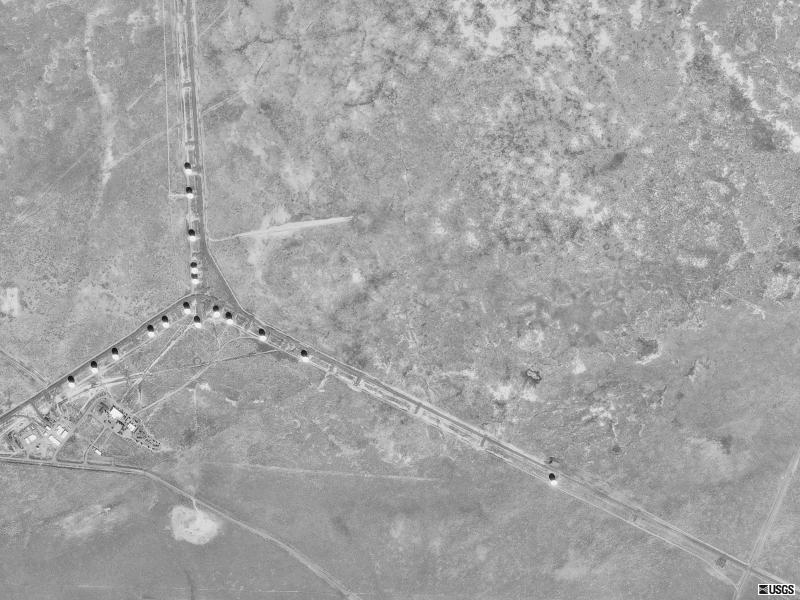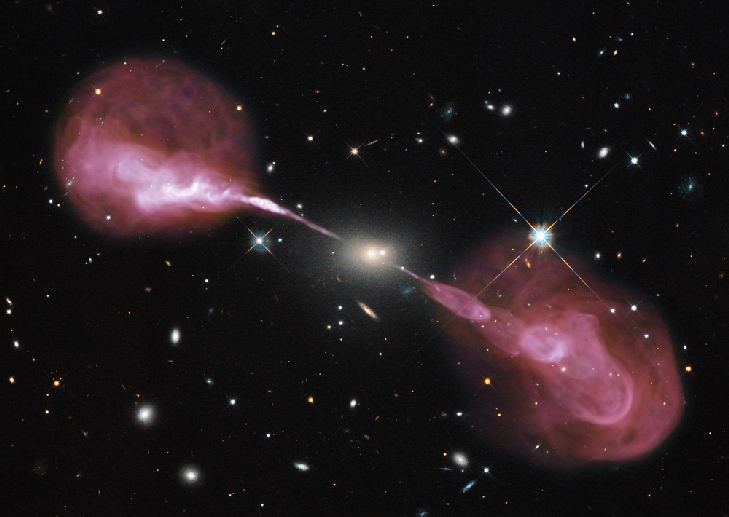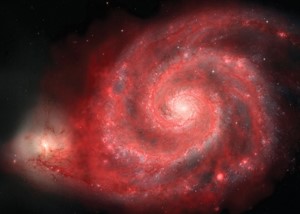
The Karl G. Jansky Very Large Array (VLA) is a radio astronomy observatory located on the Plains of San Agustin, between the towns of Magdalena and Datil, some 50 miles (80 km) west of Socorro, New Mexico. It comprises 27, 25-meter radio telescopes in a Y-shaped array and all the equipment, instrumentation, and computing power to function as an interferometer. Each of the massive telescopes is mounted on double parallel railroad tracks, so the radius and density of the array can be transformed to focus on particular bands of wavelength.[2] Astronomers using the VLA have made key observations of black holes and protoplanetary disks around young stars, discovered magnetic filaments and traced complex gas motions at the Milky Way's center, probed the Universe's cosmological parameters, and provided new knowledge about the physical mechanisms that
PAST AND FUTURE
The driving force for the development of the VLA was David S. Heeschen. He is noted as having "sustained and guided the development of the best radio astronomy observatory in the world for sixteen years."[12] Congressional approval for the VLA project was given in August 1972, and construction began some six months later. The first antenna was put into place in September 1975 and the complex was formally inaugurated in 1980, after a total investment of USD $78.5 million.[1] It was the largest configuration of radio telescopes in the world.
With a view to upgrading the venerable 1970s technology with which the VLA was built, the VLA has evolved into the Expanded Very Large Array (EVLA). The upgrade has enhanced the instrument's sensitivity, frequency range, and resolution with the installation of new hardware at the San Agustin site. A second phase of this upgrade may add up to eight additional dishes in other parts of the state of New Mexico, up to 300 km away, if funded.[13]
In 1995 and 1996, the VLA was used for following up the Wow! signal from the SETI project.[14]
Magdalena Ridge Observatory is a new observatory under construction a few miles South of the VLA includes an optical interferometer and is also run by VLA collaborator New Mexico Tech.
.
KEY SCIENCE
The VLA is a multi-purpose instrument designed to allow investigations of many astronomical objects, including radio galaxies, quasars, pulsars, supernova remnants, gamma ray bursts, radio-emitting stars, the sun and planets, astrophysical masers, black holes, and the hydrogen gas that constitutes a large portion of the Milky Way galaxy as well as external galaxies. In 1989 the VLA was used to receive radio communications from the Voyager 2 spacecraft as it flew by Neptune. It is not, despite depictions in popular culture, used to assist in the Search for Extra-Terrestrial Intelligence (SETI).
The Very Large Array is the most versatile, widely-used radio telescope in the world. It can map large-scale structure of gas and molecular clouds and pinpoint ejections of plasma from supermassive black holes. It is the world's first color camera for radio astronomy, thanks to its new suite of receivers and a supercomputer than can process wide fields of spectral data simultaneously. The VLA is also a high-precision spacecraft tracker that NASA and ESA have used to keep tabs on robotic spacecrafts exploring the Solar System.
EXPLORER THE VLA
Take a virtual trip to the Very Large Array in New Mexico with guided video tours and behind-the-scenes excursions.
Explorer...
VLA SCIENCE
The VLA can detect and image radio galaxies, their powerful jets, supernova remnants and more.
Read more...
RADIO ASTRONOMY
Read about the fundamentals of radio astronomy.
Read more...
ART GALLERY
Visit the VLA Art Gallery.
Visit...




